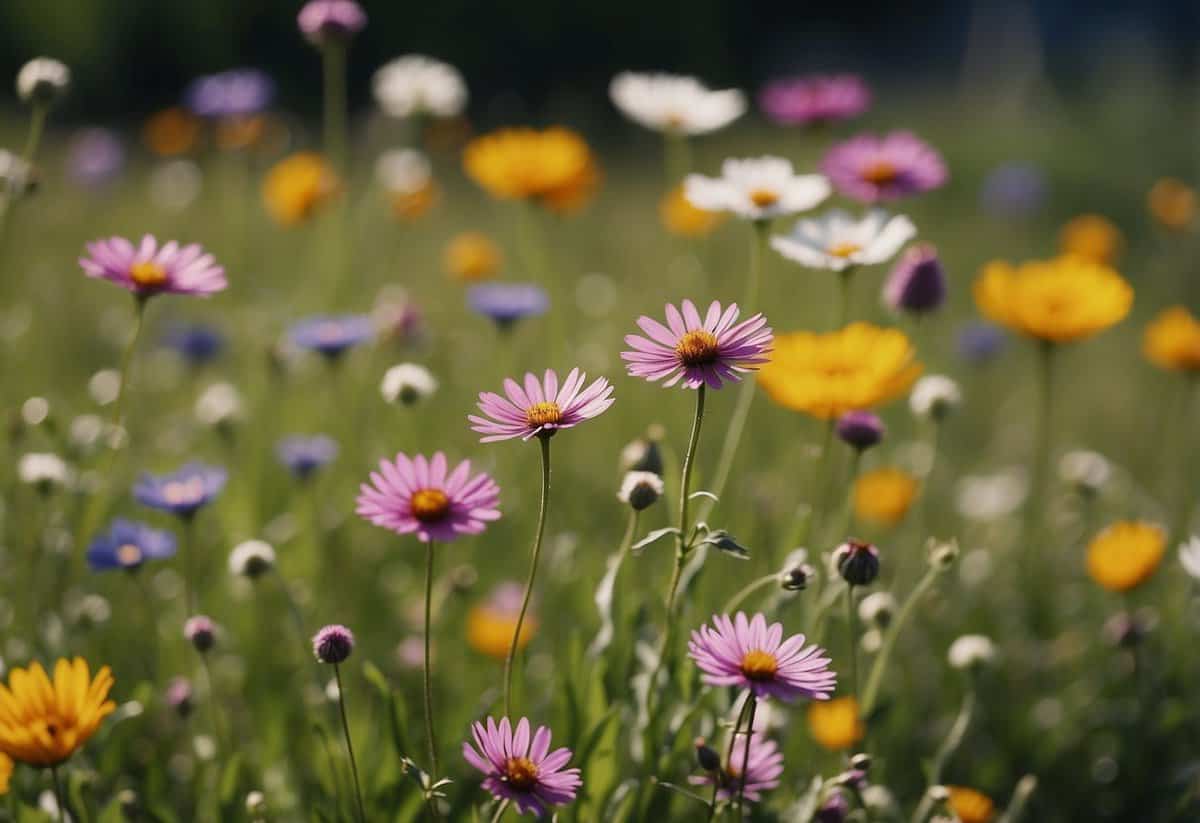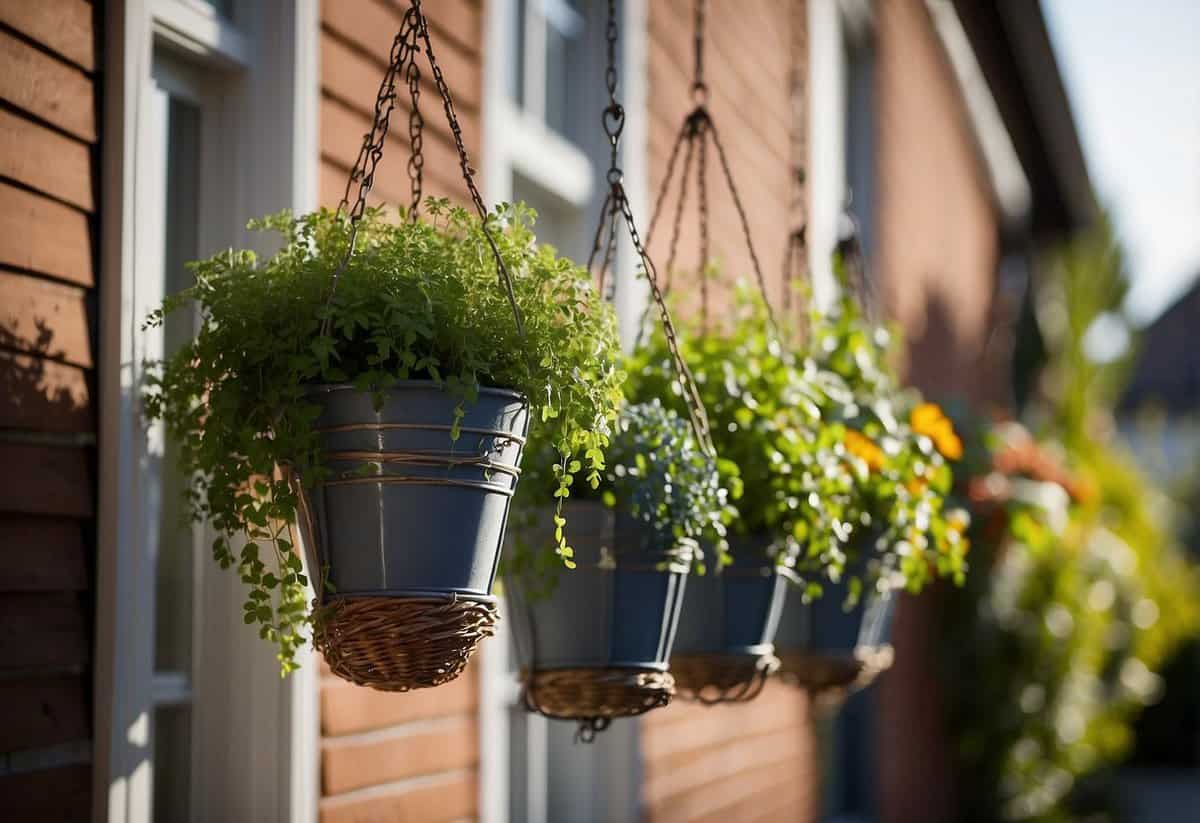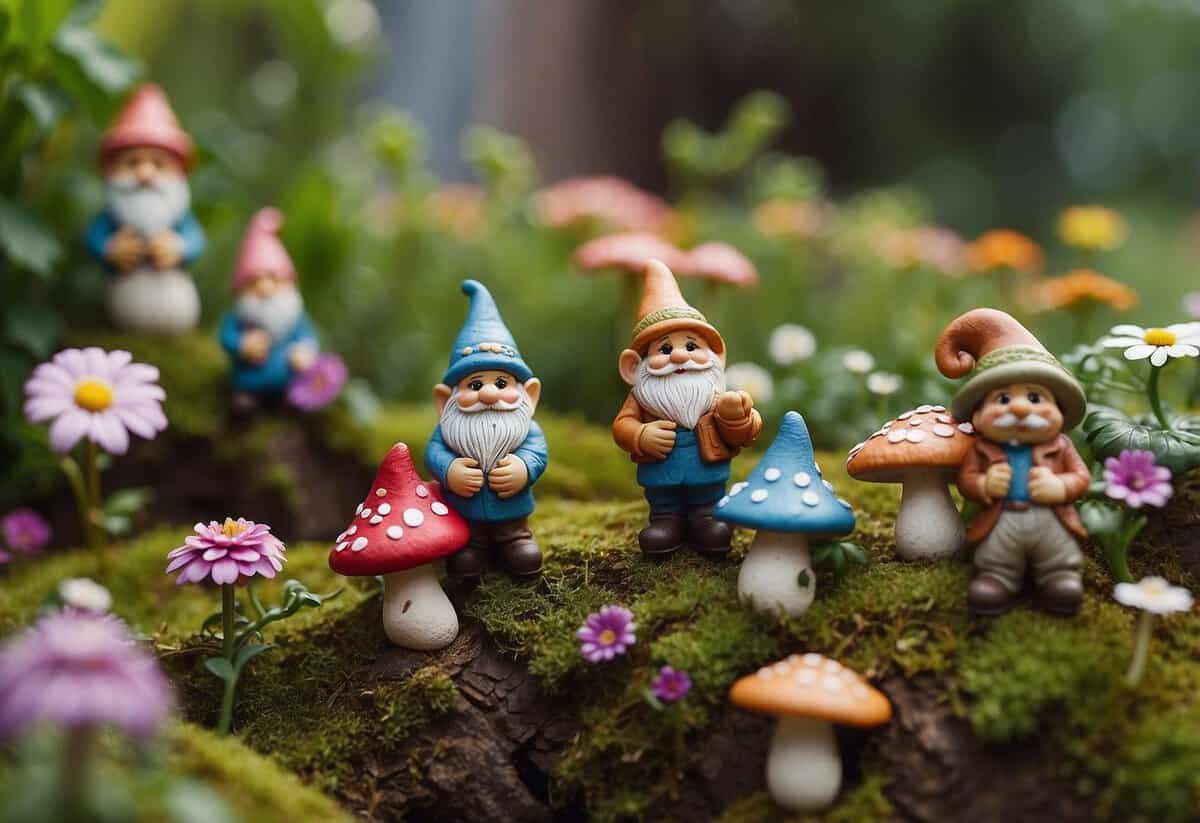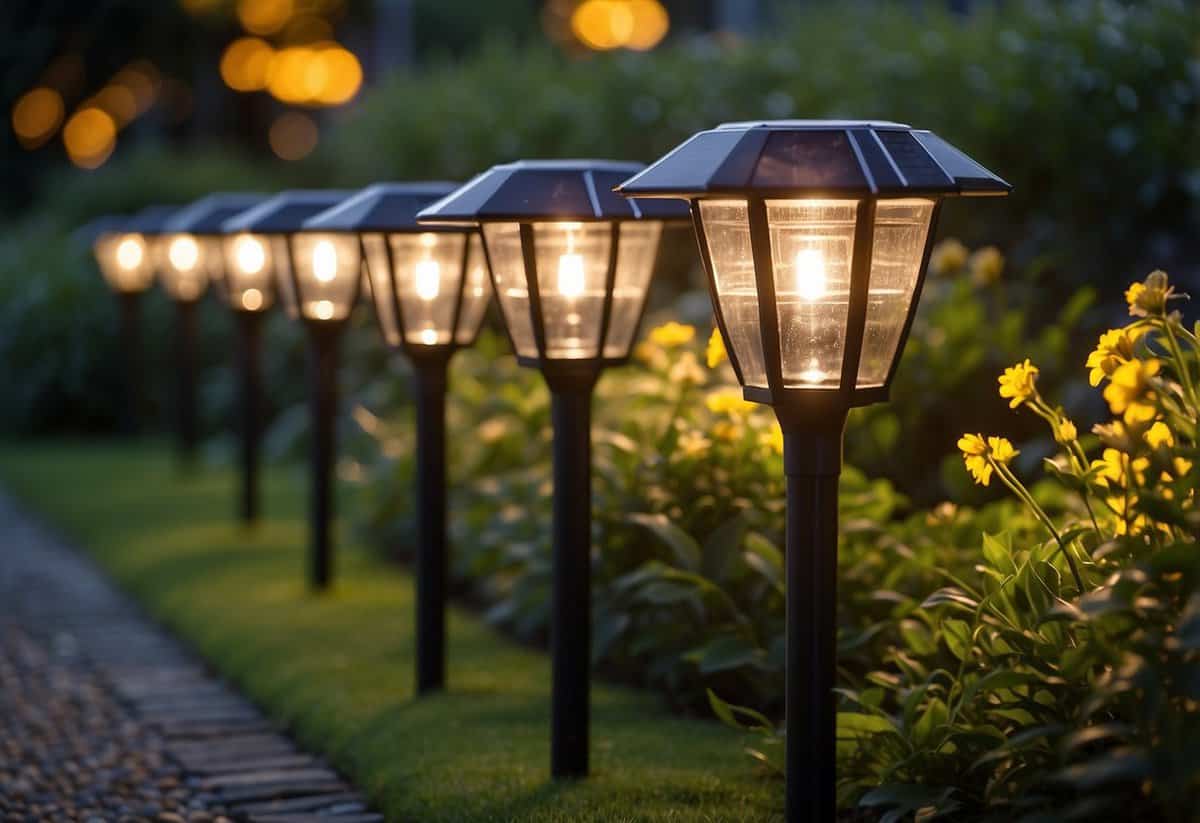Front Garden Ideas: Transform Your Curb Appeal
Transforming your front garden can be a fun and rewarding project. Whether you have a small urban space or a sprawling suburban lawn, there are plenty of creative ways to enhance the curb appeal of your home. From bright flowers to lush greenery, you have many options to create a welcoming and beautiful entrance.

Why not turn your front yard into a space that reflects your personal style and makes a great first impression? With the right combination of plants, materials, and design techniques, you can craft a stunning landscape that will be the envy of your neighborhood. Dive into various ideas and tips that suit your specific needs and climate, and bring your dream front garden to life.
1) Vertical Garden Wall

A vertical garden wall can transform your front garden. It saves space while adding a lush, green touch.
Install it along a fence or wall using planter boxes or shelves. This setup is perfect for small spaces.
Choose plants like succulents, ferns, or herbs. These are easy to maintain and look great. For more ideas, check out these unique DIY vertical garden ideas.
2) Rustic Stone Pathway

A rustic stone pathway can add a charming touch to your front garden. Using natural stones, you can create a path that blends beautifully with the environment.
Place stones randomly but with intention. This helps the path look natural and inviting. Consider using stones of different sizes for more visual interest.
Incorporate plants like ferns or creeping thyme between stones. This softens the hard edges and adds greenery. A rustic stone pathway not only looks great but also guides visitors through your garden. For inspiration, check out these rustic garden path ideas.
3) Wildflower Meadow

Creating a wildflower meadow in your front garden can make a beautiful and vibrant display. Choose a mix of colorful wildflowers like purple wild marjoram, blue field scabious, and red campion. These will add height and attract butterflies and bees.
Allow your wildflowers to intermingle naturally. This will give your garden a relaxed and charming look. Wildflower meadows are low maintenance and great for the environment. Learn more about planting a wildflower meadow here.
4) Outdoor Water Fountain

Adding an outdoor water fountain can transform your front garden. It creates a peaceful ambiance with the sound of flowing water.
Consider a freestanding fountain for a striking focal point. These come in various sizes to fit different spaces.
For a touch of elegance, you might like the Carrera Oval Fountain. This design features a sleek shape and soothing water cascades.
5) Hanging Plant Baskets

Hanging plant baskets can add a touch of charm to your front garden. They work well in small spaces, providing greenery and blooms without taking up ground space.
Choose plants like calibrachoa or verbena for a splash of color. These do well in full sun and are easy to care for.
Mix in foliage plants for texture. This can give your baskets a modern look, ideal for any garden style. And don’t forget trailing plants like sweet potato vine for a dramatic effect.
6) Garden Gnome Village

A garden gnome village can add charm and whimsy to your front yard. Start by creating tiny houses for your gnomes using materials like tree stumps or old pots. You can paint these homes and add small details like windows and doors.
Arrange the gnome houses in a way that creates a small community. Adding tiny pathways, bridges, and light posts can enhance the village feel. Use miniature furniture and accessories to give it a lived-in look.
Consider placing your gnome village near flower beds or under trees for a natural setting. This can make your gnome village a delightful focal point in your garden. For more ideas, check out these gnome garden designs and get inspired.
7) Solar-Powered Garden Lights

Solar-powered garden lights are a great way to brighten your front garden. They use the sun to charge during the day and light up your garden at night. You save energy and avoid messy wiring.
Fairy lights can cover fences, screens, or shrubs, adding a magical touch. For a more modern look, consider flaming solar-powered path lights. They guide your way and make your garden pathways look beautiful.
Hanging solar lanterns add a cozy atmosphere. Choose ones with candles for a warm, inviting glow during evening gatherings.
8) Herb Spiral Garden

If you love fresh herbs, consider building an herb spiral garden. This design maximizes space and creates different microclimates for various herbs.
Gather materials like stones or bricks to form the spiral. Start from the center and work your way outwards, gradually increasing the height.
Fill the spiral with soil. Plant herbs that thrive in drier conditions at the top and those that need more moisture at the bottom. This way, your herbs will have the right environment to flourish. Learn more about making an herb spiral garden from Lovely Greens.
9) Garden Swing Bench

A garden swing bench is a wonderful addition to any front yard. It provides a cozy spot where you can relax and enjoy the view.
You can choose from various styles, such as wooden or metal, to match your garden’s aesthetic. Adding cushions can make it more comfortable and inviting.
Don’t forget to hang it securely and check the weight limits to keep everyone safe. This bench can become your favorite spot for reading or sipping tea while enjoying your garden.
10) DIY Pallet Planter

Creating a DIY pallet planter is a fun and easy project for your front garden. Start by finding an old wooden pallet. Make sure it’s in good condition and clean.
You can use the pallet as is or add some modifications. For example, you can attach a vertical herb garden by securing small pots to the slats.
Another idea is to stack pallets and fill them with dirt to create a multi-level garden. This gives you plenty of grow space and adds a unique look to your garden.
Adding a chicken wire planter to your pallet is another creative option. Form the wire into cone shapes and staple them onto the pallet. Fill the cones with soil and plants. Check out more ideas from these DIY pallet garden ideas.
Designing Your Front Garden

Creating a beautiful front garden involves assessing your space and choosing a theme that enhances your home’s curb appeal. These steps help ensure that your garden is functional, attractive, and fits with your personal style.
Assessing Your Space
First, evaluate the size and shape of your front yard. Measure the area to understand what you can work with. Take note of how much sun and shade each part gets during the day.
Observe any slopes or level changes. Identify existing plants and structures. This helps you decide what to keep or remove.
Also, consider your climate. Certain plants thrive better in specific climates. Knowing your soil type is important too. You might need to amend the soil for certain plants to grow well.
Choosing a Theme
Selecting a theme gives your garden a unified look. Decide if you want a formal, modern, cottage, or natural style. This choice will influence your plant selections and layout.
A formal garden might feature hedges and symmetrical designs. A cottage garden often includes colorful, randomly placed flowers. For a modern look, use clean lines and minimalist plantings.
Think about adding elements like a rose arbor or tiered garden beds for added interest. Incorporate low-maintenance options if you prefer less upkeep.
Creating a theme helps your garden stand out while making a good impression on visitors.
By carefully planning and choosing a style, you can design a stunning front garden that suits your home and lifestyle.
Plant Selection and Placement

Choosing the right plants and arranging them effectively can transform your front garden into a stunning landscape. You’ll want to select plants that suit your climate and soil, and then arrange them in ways that maximize their visual impact.
Picking the Right Plants
Start by selecting plants that thrive in your region’s climate. Check your local USDA hardiness zone to find plants that will survive and flourish throughout the year. For example, if you live in a colder area, consider hardy perennials like hostas and daylilies. Warmer climates might be ideal for succulents and bougainvillea.
Soil type is another crucial factor. Conduct a soil test to determine its pH level and nutrient content. Choose plants that match these conditions. If your soil is acidic, plants such as azaleas and blueberries will thrive. For alkaline soil, consider lavender and rosemary.
Lastly, consider the sunlight. Plants like roses and lavender need full sun, while ferns and hostas prefer shade. Mixing sun-loving and shade-tolerant plants can ensure that all areas of your garden are vibrant and lively.
Arranging Plants for Visual Appeal
Grouping plants is a simple and effective way to organize your garden. This method, also known as drift planting, involves placing plants in clusters of odd numbers like 3, 5, or 7. It creates a natural look that adds depth and texture to your garden.
Create layers with your plants. Place taller plants at the back and shorter ones in front. This not only makes all plants visible but also adds dimension to your garden. For instance, place tall foxgloves or delphiniums at the back, medium-height coneflowers in the middle, and low-growing alyssum at the front.
Also, think about the color palette. Use contrasting colors to make your garden pop. For example, pair purple lavender with yellow marigolds. You can also create a monochromatic scheme using different shades of the same color for a more serene look.







